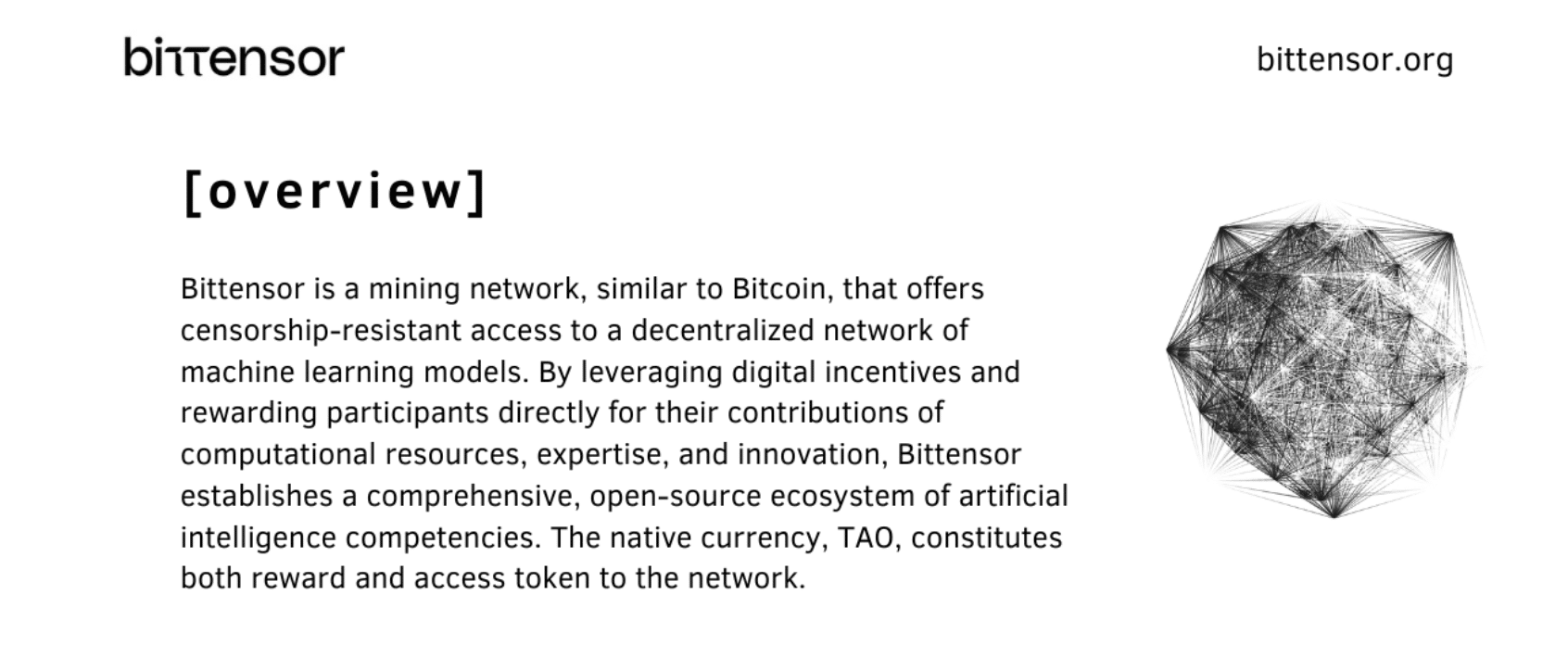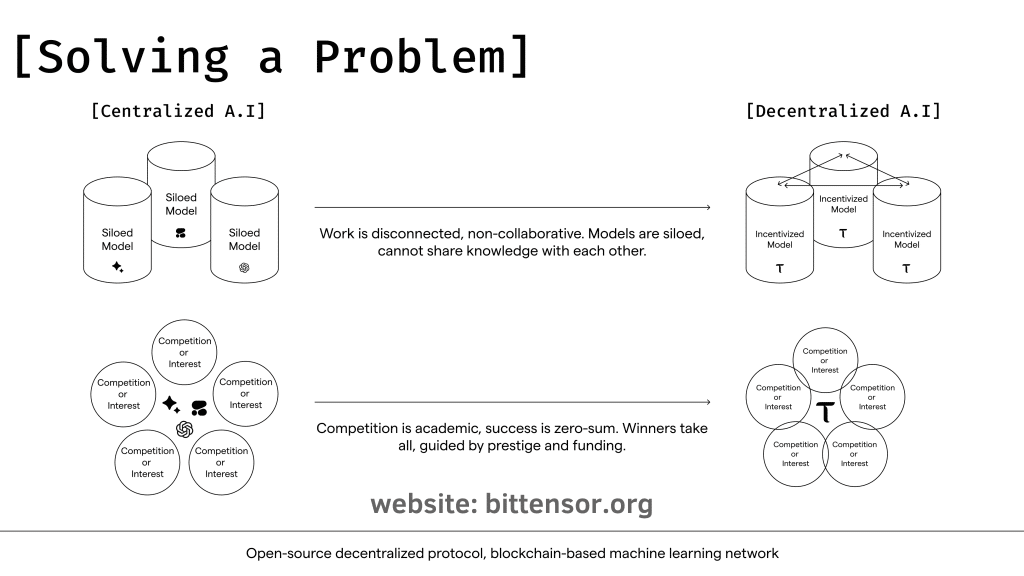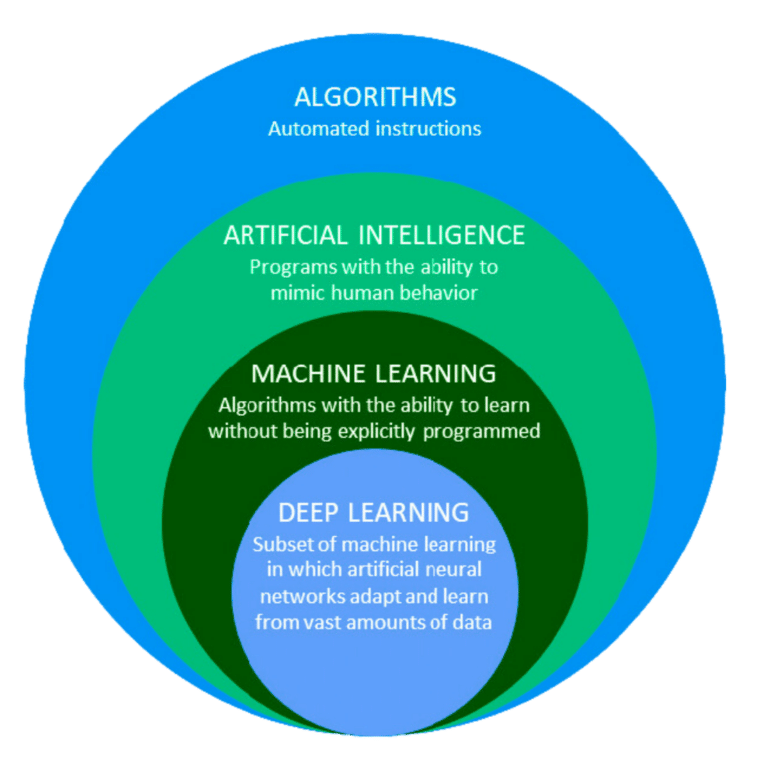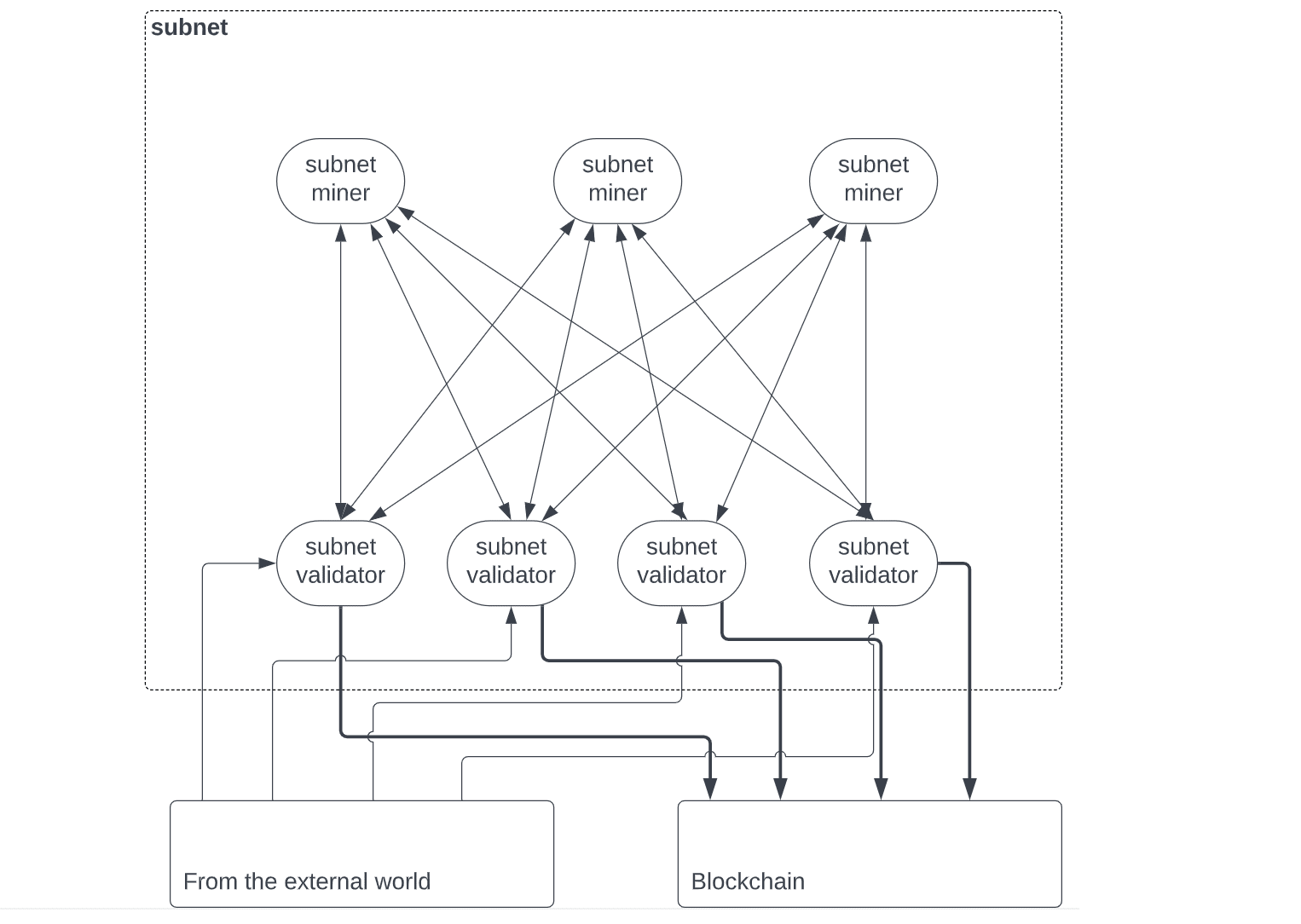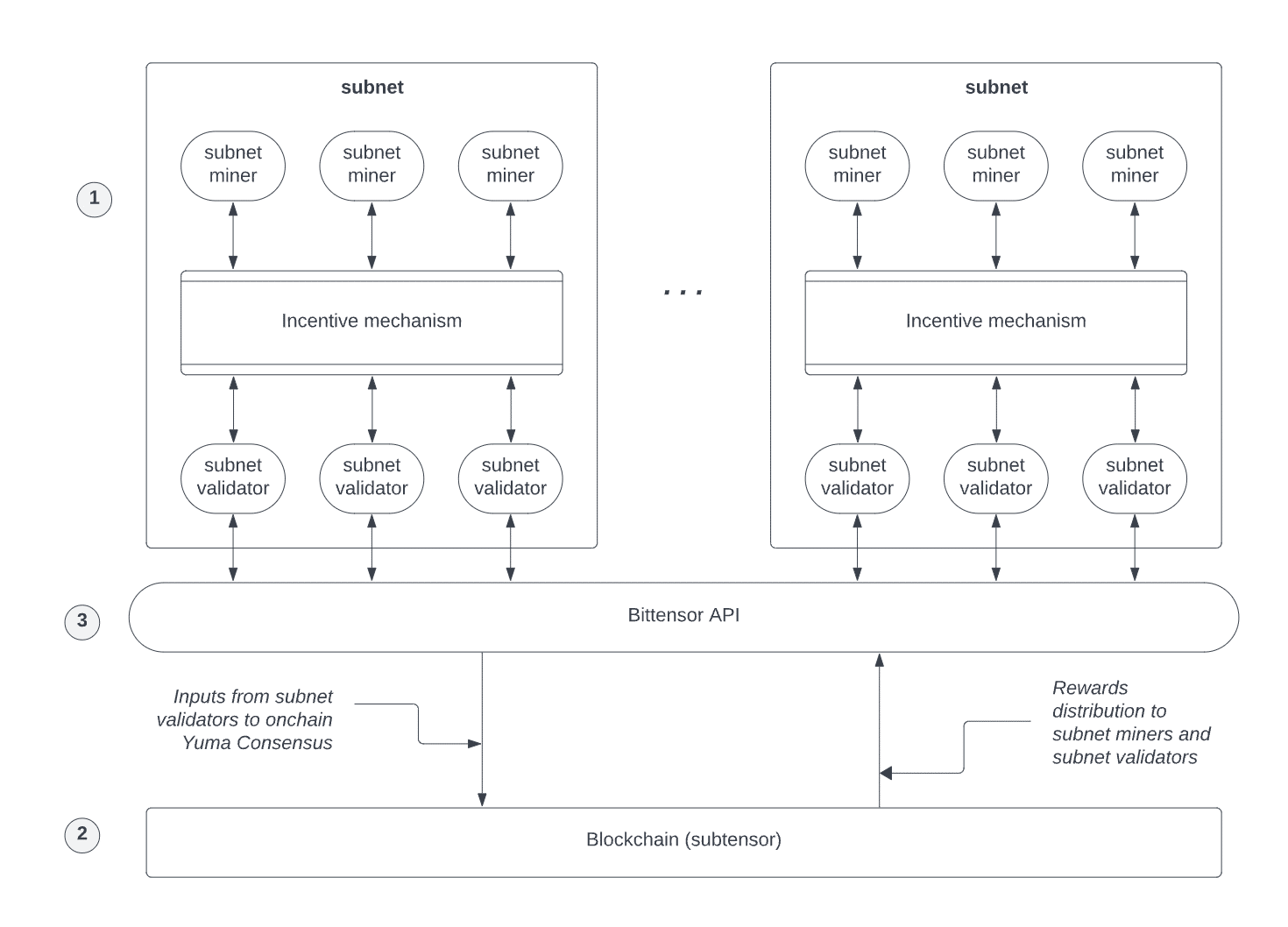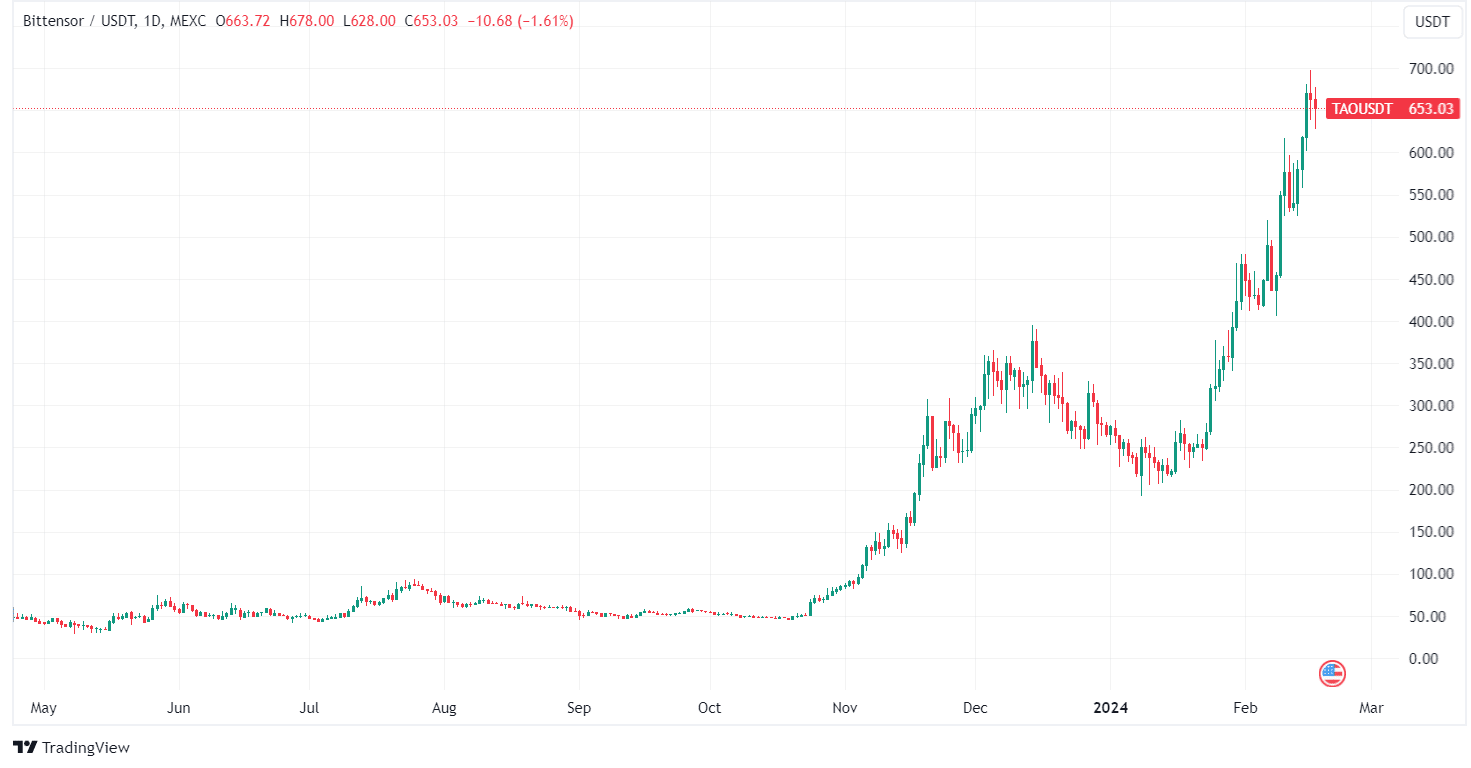Bittensor is a decentralized protocol that transforms machine learning models into a competitive marketplace, incentivizing the creation of decentralized machine intelligence.
Written by: Anatol Antonovici | Updated February 20, 2024
Reviewed by: Mike Martin
Fact checked by: Ryan Grace
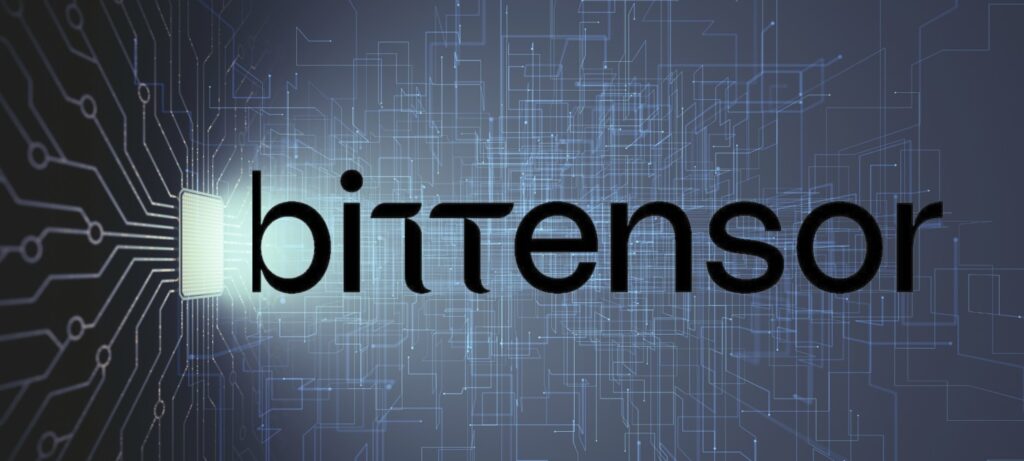
Bittensor has rapidly become the leading blockchain specializing in artificial intelligence (AI), experiencing a tenfold growth in the span of five months leading up to February 2024. In this article, we tell you how Bittensor works and explain the role of ‘TAO’, the protocols native cryptocurrency.
Table of Contents
🍒 tasty takeaways
Bittensor is a decentralized ecosystem comprised of AI models. Its mission is to democratize AI and accelerate its growth.
The native crypto of Bittensor, TAO, has been one of the best-performing tokens of 2024.
Bittensor aims to become the world’s first neural internet.
Summary
| Feature | Details |
|---|---|
| Platform | Bittensor is a decentralized protocol for AI and ML model development. |
| Growth | Rapid tenfold growth, becoming the leading AI blockchain by February 2024. |
| Mission | To democratize AI and create a global, open-source neural internet. |
| Decentralization | Aims to decentralize AI, moving away from corporate monopolies. |
| TAO Token | Used for rewards, staking, governance, and payments within the network. |
What Is Bittensor?
Source: Bittensor
Bittensor is a decentralized blockchain network acting as an open peer-to-peer (P2P) ecosystem for creating, training, sharing, and trading artificial intelligence (AI) and machine learning (ML) models.
The protocol gives rise to a global ecosystem where AI models come together to form a borderless neural network, which can be thought of as a digital hive mind. By leveraging distributed networks, knowledge sharing, and incentivizing participation, Bittensor aims to drive AI innovation.
Solving the Problem of Centralized AI
Today, training AI models require huge amounts of computing power and data – something that only large companies can achieve – think about Google, IBM, or Microsoft. The concentration of AI resources into the hands of a few corporations has led to siloed AI models.
Bittensor aims to make AI and machine learning a public good that can rely on collaboration and P2P interactions. Thanks to this approach, it can develop at a faster pace compared to being limited by corporate permissioned frameworks.
Source: Bittensor
Bittensor Goals
By building on the promise of decentralization, Bittensor aims to achieve several goals:
- Increase the pace of development of AI and ML models.
- Make AI open-source and part of the public domain.
- Develop a P2P marketplace to incentivize the production and training of machine intelligence.
- Encourage the interaction of AI experts and contribute to knowledge distillation to achieve the development of more powerful AI models.
- Develop a decentralization economy for AI by incentivizing individual contributions of knowledge and participation.
- Build a borderless neural network on an open-source platform.
What Is AI and ML?
Source: ResearchGate
Artificial intelligence (AI) and machine learning (ML) are technologies that aim to mimic human intelligence in problem-solving, analysis, and decision-making. Here’s how they differ:
- AI is a broad concept that relates to using technologies to develop computers and algorithms that can reach human-like cognitive functions and intelligence. For example, AI aims to become capable of analyzing, understanding, and responding to spoken or written language.
- ML is a subset of AI that uses algorithms to automatically learn insights, recognize patterns from data, and improve with experience. ML algorithms can enhance their performance over time through training and exposure to additional data.
AI became a hot topic shortly after the launch of the ChatGPT chatbot by OpenAI. It has become the fastest-growing app, reaching 1 million users in only five days and 100 million users in about two months.
How Does Bittensor Work?
Bittensor’s decentralized network enables the exchange of ML models among participants, who include three main players:
- Miners – the protocol’s AI tasks are addressed by multiple machines owned by so-called ‘miners’, who share their ML models and computation resources to the network. Miners are rewarded with the native cryptocurrency, TAO.
- Users – the crypto coin TAO is also used to pay for asking questions or getting tasks done by AI. When a question is asked, the network leverages a consensus mechanism to determine the best response, which is valued automatically based on multiple parameters.
- Validators – besides miners, validators also play a key role in the Bittensor network. Their task is to validate the responses and predictions provided by miners, ensuring the integrity and quality of the data and models. They query miners and then evaluate their responses, being rewarded for their efforts. You can see the list of Bittensor validators here.
Bittensor Subnets
Bittensor’s structure represents a network of decentralized subnets, where each subnet is focused on a topic and relies on an incentive-based mechanism to drive miner competition.
For example, the text prompting subnet rewards miners for producing the highest-quality text responses to prompts issued by subnet validators. Currently, there are 32 subnets.
Subnets are designed to resemble classical neural networks, where a node can represent either a subnet validator or a subnet miner. Each node is referred to as a neuron, and together, they form a global neural network.
Validators represent nodes in a subnet’s input layer, receiving inputs from the external world. Elsewhere, miners form the ‘hidden layer’ and communicate with validators only. Validators cannot communicate between themselves, which is also true of miners.
Source: Bittensor
Bittensor’s subnets are one of the three key elements of the ecosystem. The other components consist of the foundational blockchain, which operates all the subnets and guarantees a transparent and secure reward system, and the Bittensor API, which links the subnets to the blockchain.
Source: Bittensor
What is TAO?
TAO is the native cryptocurrency of the Bittensor ecosystem, and it has multiple functions:
- Rewards – TAO is used to incentivize miners to perform various tasks and share computational power.
- Staking – to become a validator, participants must stake TAO first, which is a form of collateral to encourage honest behavior. Another form of staking is delegation, in which TAO holders delegate tokens to a subnet validator to earn rewards.
- Governance – TAO holders can participate in governance by proposing changes and voting on protocol upgrades.
- Fees and payments – TAO is used for transaction fees and smart contract execution. The token is also used to pay for machine learning services provided by the Bittensor network.
TAO Performance
TAO is a deflationary token with a total supply capped at 21 million, just like Bitcoin (BTC). The tokens are distributed gradually in the form of mining rewards and other incentives. As of mid-February 2024, TAO’s circulating supply is over 6 million or almost 30%.
The token has surged since the end of 2023, with the market cap figure increasing from $1 billion in November to an all-time high of $4.3 billion in February amid record weekly trading volume. It has quickly become the largest AI crypto coin by market cap.
Source: TradingView
Buy TAO Cryptocurrency
You can easily purchase TAO with the tastycrypto self-custody wallet. However, since TAO doesn’t abide by the ERC-20 token standard, you will need to purchase the wrapped version, the symbol of which is ‘wTAO’.
FAQs
Bittensor is a decentralized protocol for developing, training, sharing, and trading artificial intelligence and machine learning models. It represents a network of subnets that comprise miners, who address AI tasks, validators, who verify miners’ results, and end-users.
TAO is the native token of the Bittensor ecosystem. It is used for incentivizing miners, staking, governance, transaction fees, and payments. There is a Wrapped TAO (wTAO) token on Ethereum, which is compatible with decentralized finance apps like Uniswap.
Bittensor’s TAO borrows from Bitcoin’s tokenomics. For example, it has a similar total supply of 21 million tokens, and emission volumes are reduced every four years.
ChatGPT is a specialized AI model developed by OpenAI. It has been trained to understand and generate human-like text. Elsewhere, Bittensor is a decentralized network of multiple AI models.
🍒 tasty reads


The Core Blockchain and DeFi Ecosystem: What You Need to Know

7 Best DePIN Crypto Projects

What Is Symbiotic and How Does It Work in 2024?

Ethereum vs Ethereum ETFs – 5 Major Differences


Anatol Antonovici
6+ years of experience writing for crypto brands and blockchain firms, including Coindesk, Cointelegraph, Bitcoinist, CryptoPotato, Algorand, and OTCTrade.com


